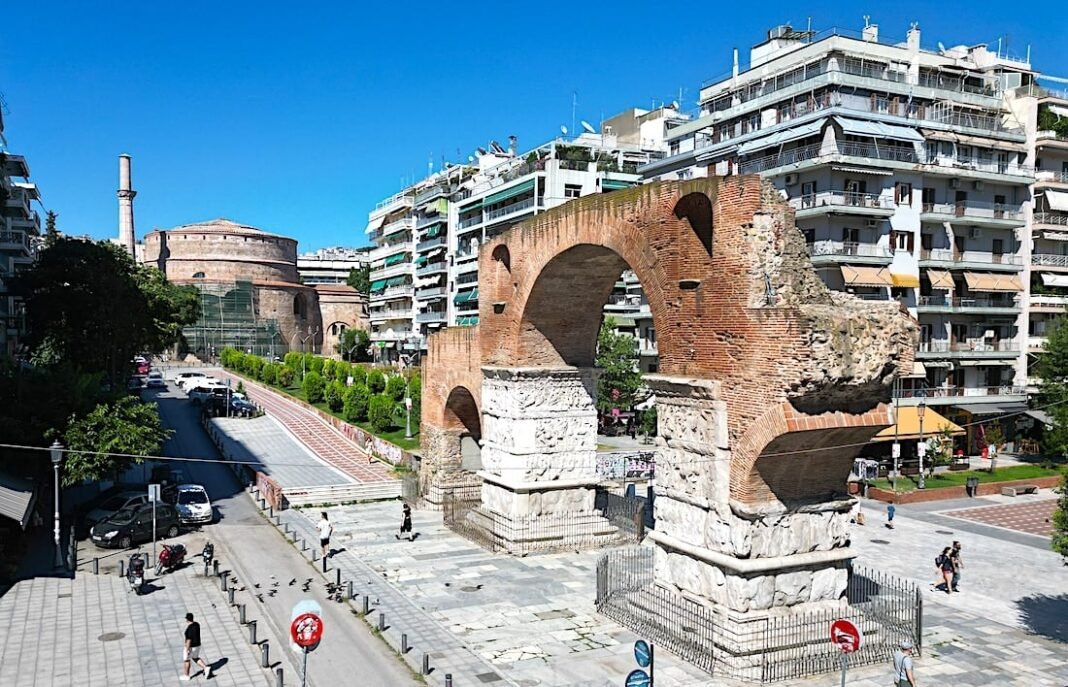
The Greek Ministry of Culture is launching a major initiative to connect 20 key archaeological sites and monuments within the historic center of Thessaloniki into a single, cohesive cultural network.
The goal is to comprehensively showcase the city’s rich, layered history, which spans Greek, Roman, Byzantine, Ottoman, and Jewish heritage.
Culture Minister Lina Mendoni announced the project at the Museum of the Roman Agora, confirming that an architectural competition will begin in early December. The project is managed by the state-run firm Anaplasis SA.
The plan will include upgraded routes and pedestrian walkways linking the landmarks, landscaping and expanded green spaces, and improved sidewalks and sensory signage to enhance accessibility.
Thessaloniki monuments highlighted in the network project
The project focuses on connecting sites that represent Thessaloniki’s role as an unbroken urban center for over 2,300 years. The core landmarks mentioned are:
The Roman Heritage (Ancient Agora & Rotunda) and Ancient Agora (Roman Forum): This was the central administrative and social hub of the Roman city. Located in the heart of modern Thessaloniki, it features an ancient theater (Odeon) and other structures dating back to the late 2nd or early 3rd century AD. The modern Museum of the Roman Agora is situated here.
The Rotunda: One of the most significant Roman structures in the city, the Rotunda was built around 306 AD, possibly intended as a mausoleum for Emperor Galerius. It later served as a Christian church (known as the Church of Aghios Georgios) and then as a mosque during the Ottoman era, making it a unique example of multi-era religious use. It is part of the Paleochristian and Byzantine Monuments of Thessaloniki UNESCO World Heritage Site.
Byzantine Heritage and the Church of Agios Dimitrios: The Byzantine-era church dedicated to Thessaloniki’s patron saint, Saint Demetrius, was constructed in the 7th century AD. It is famous for its subterranean crypt where the saint was martyred, and its restored early Christian mosaics are world-renowned. This is the most important religious monument of the Byzantine city and is also a UNESCO World Heritage Site.

The Ottoman Period: The Alaca Imaret Mosque, dating to 1484, is a preserved example of Ottoman religious architecture built after the city’s conquest. Its name translates to “Colorful Mosque” (though sometimes referred to as the “Painted Imaret”) and it was built as part of a complex that included a soup kitchen (imaret), showcasing the charitable and administrative functions of the new rulers.
The White Tower: The iconic symbol of Thessaloniki. Originally built in the 15th century to replace an older Byzantine fortification, it was part of the city’s defensive walls. It served variously as a fort, a garrison, and notoriously, a prison (known as the “Tower of Blood”). It was painted white in the 19th century to symbolize cleansing and now serves as a museum dedicated to the city’s history.


